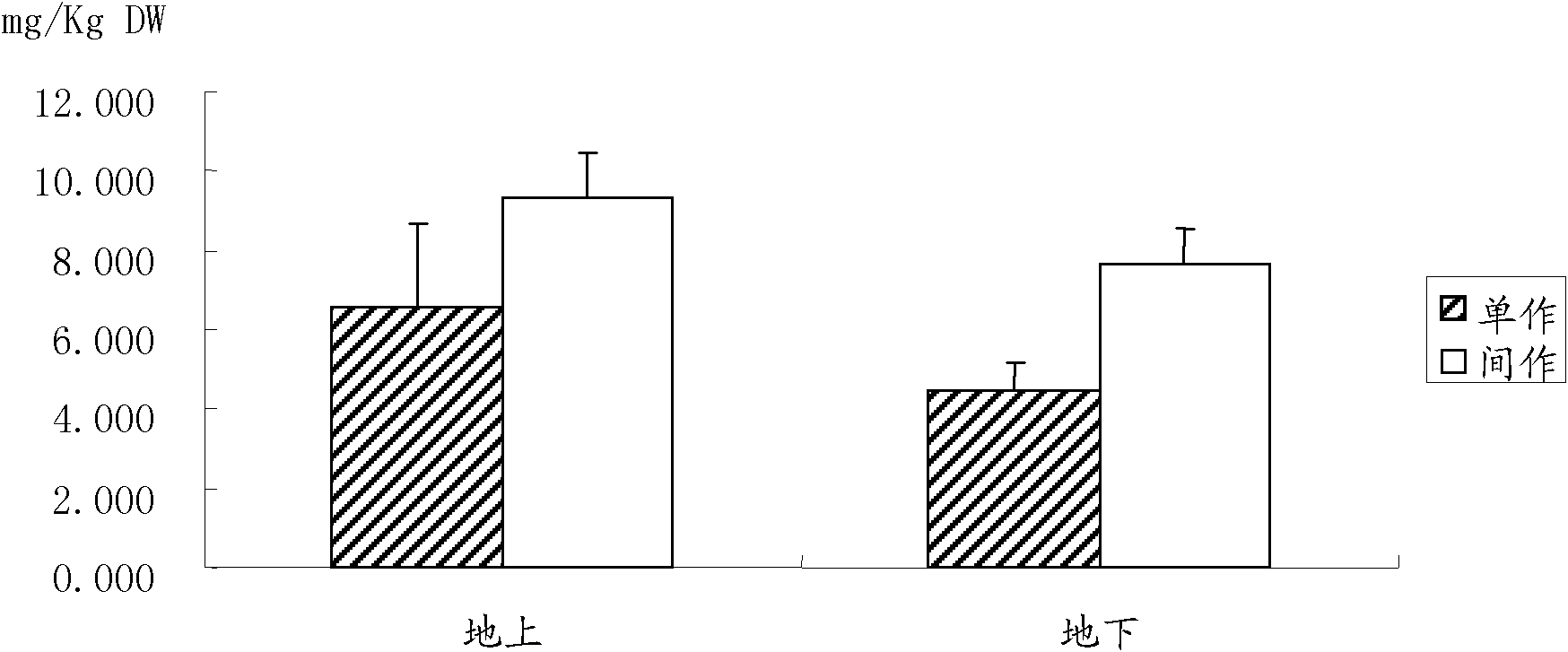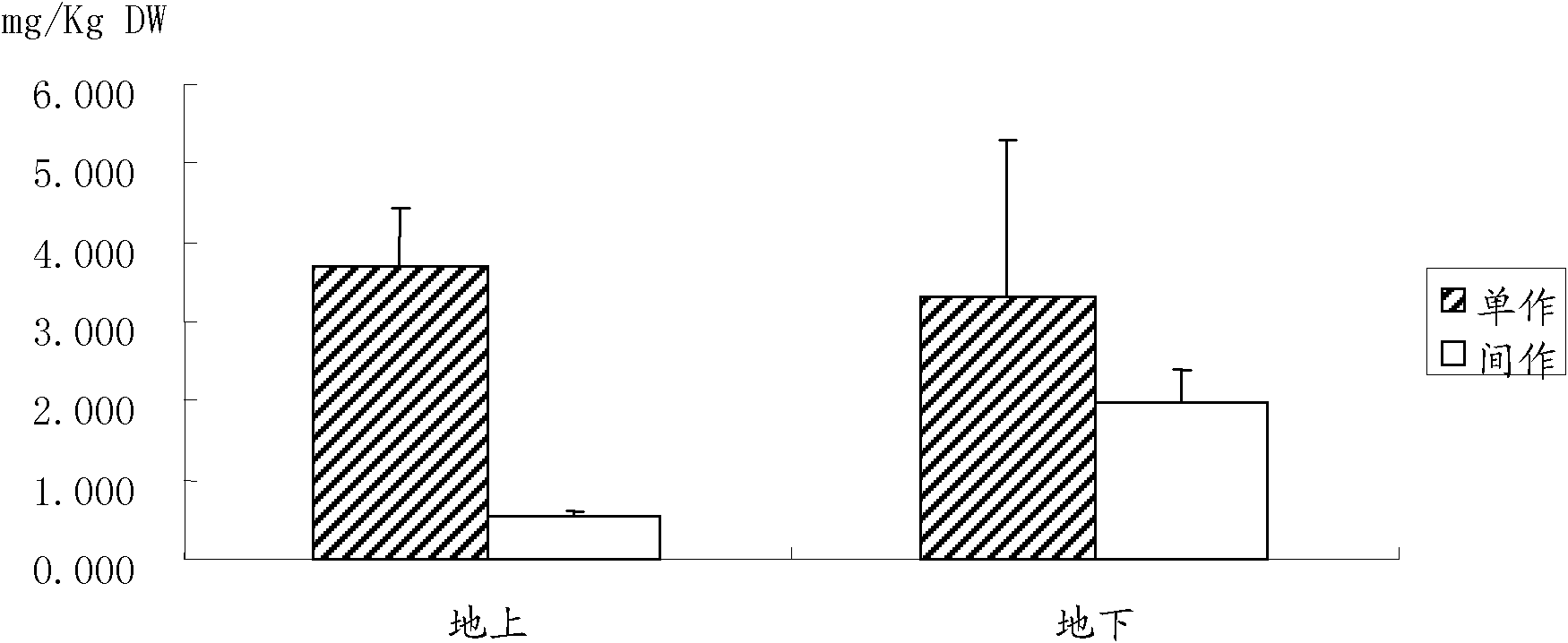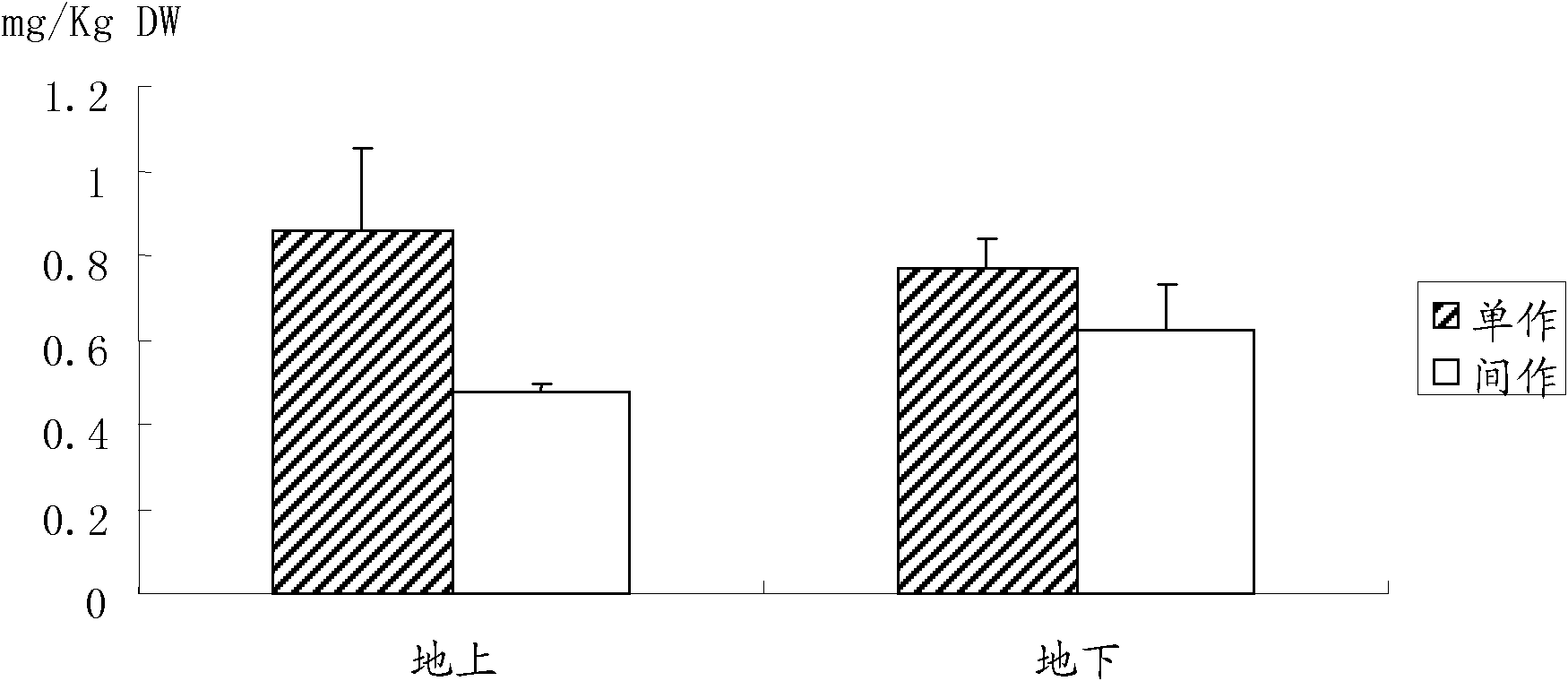Method for remedying soil polluted with cadmium by using interplanting
A technology for remediation of soil and cadmium pollution, applied in the fields of botanical equipment and methods, application, horticulture, etc., can solve the problems of small biomass, unsatisfactory remediation effect, slow growth, etc.
- Summary
- Abstract
- Description
- Claims
- Application Information
AI Technical Summary
Problems solved by technology
Method used
Image
Examples
Embodiment 1
[0020] Embodiment 1: Cadmium accumulation effect of co-planting green vegetables and cabbage in pot experiments
[0021] CdSO 4 ·8H 2 O is evenly mixed into the dry and sieved soil to make the cadmium content of the soil reach 3mg / Kg, and it is placed for 1 month to make the heavy metals evenly distributed, during which the whole is turned every five days.
[0022] According to the preliminary experimental screening, the cabbage variety Hangzhou Youdonger is a relatively high-accumulating variety of cadmium, and the cabbage variety Jingfeng No. 1 is a relatively low-accumulating variety of cadmium. In plastic square pots of 40x20x20cm, 20Kg of cadmium-contaminated soil was added to each pot. There are three planting modes: Hangzhou Youdong'er single cropping, Jingfeng No. 1 single cropping, and intercropping of two kinds of vegetables. For single cropping, 6 vegetables are planted in each pot, and for intercropping, 3 vegetables are planted in each pot.
[0023] The seeds ...
Embodiment 2
[0025] Example 2: The cadmium accumulation effect of planting Hangzhou Youdonger and Jingfeng No. 1 in large field cropping
[0026] The experiment was carried out in Baimutan Village, Zeguo, Wenling, where the soil cadmium content was 0.83mg / Kg (three-level pollution level). Set up a 2x5m square plot, and plant Hangzhou Youdonger, Jingfeng No. 1 and intercropping between the two.
[0027] They were bred in late March 2009 and moved into the field in mid-April. During planting, 3 rows of vegetables were planted in each plot with a plant spacing of 30 cm, and the intercropping plots Hangzhou Youdonger and Jingfeng No. 1 were planted at intervals. Harvest in July, randomly harvest 5 plants per plot. The harvested vegetables were washed with deionized water, wiped dry, divided into aboveground part and underground part, weighed fresh respectively, dried at 70°C until constant weight, and weighed dry. Crushed, digested, and measured for cadmium content.
[0028] Compared with ...
Embodiment 3
[0029] Embodiment 3: The cadmium accumulation effect of planting Corngrass and corn in large field
[0030] Experimental place, mode are the same as embodiment two.
[0031] Compared with single cropping, the Cd accumulation in the lower part of the high-accumulation corngrass increased significantly in the intercropping group, while the whole plant of the low-accumulation corn decreased ( Figure 4 ). There was no significant difference between monocropping and intercropping of corn fruit, all of which were lower than the national food safety standard, but the decrease of cadmium content in corn plants helped to improve the safety of food corn. Intercropping improved the accumulation ability of cadmium in high cadmium accumulating varieties, and reduced the accumulation of cadmium in low accumulating varieties.
PUM
 Login to View More
Login to View More Abstract
Description
Claims
Application Information
 Login to View More
Login to View More - R&D
- Intellectual Property
- Life Sciences
- Materials
- Tech Scout
- Unparalleled Data Quality
- Higher Quality Content
- 60% Fewer Hallucinations
Browse by: Latest US Patents, China's latest patents, Technical Efficacy Thesaurus, Application Domain, Technology Topic, Popular Technical Reports.
© 2025 PatSnap. All rights reserved.Legal|Privacy policy|Modern Slavery Act Transparency Statement|Sitemap|About US| Contact US: help@patsnap.com



